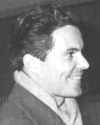
Born 31 Jan 1929.
German physicist and co-winner (with American Robert Hofstadter) of the Nobel Prize for Physics in 1961 for his researches concerning the resonance absorption of gamma-rays and his discovery in this connection of the Mössbauer effect. The Mössbauer effect occurs when gamma rays emitted from nuclei of radioactive isotopes have an unvarying wavelength and frequency. This occurs if the emitting nuclei are tightly held in a crystal. Normally, the energy of the gamma rays would be changed because of the recoil of the radiating nucleus. Mössbauer's discoveries helped to prove Einstein's general theory of relativity. His discoveries are also used to measure the magnetic field of atomic nuclei and to study other properties of solid materials.
German physicist and co-winner (with American Robert Hofstadter) of the Nobel Prize for Physics in 1961 for his researches concerning the resonance absorption of gamma-rays and his discovery in this connection of the Mössbauer effect. The Mössbauer effect occurs when gamma rays emitted from nuclei of radioactive isotopes have an unvarying wavelength and frequency. This occurs if the emitting nuclei are tightly held in a crystal. Normally, the energy of the gamma rays would be changed because of the recoil of the radiating nucleus. Mössbauer's discoveries helped to prove Einstein's general theory of relativity. His discoveries are also used to measure the magnetic field of atomic nuclei and to study other properties of solid materials.
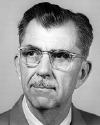
Born 31 Jan 1902; died 6 Feb 1972 at age 70.
Julian Haynes Steward was an American anthropologist best known as one of the leading neoevolutionists of the mid-20th century and as the founder of the theory of cultural ecology. He also did studies of the social organization of peasant villages, conducted ethnographic research among the North American Shoshoni Indians and various South American Indians. Steward acquired a lifelong interest and attachment to the Shoshoni and Northern Paiute Indians. He held an intense drive to salvage and preserve as much information as possible on native North American Indians before all of the information and culture was lost.
Julian Haynes Steward was an American anthropologist best known as one of the leading neoevolutionists of the mid-20th century and as the founder of the theory of cultural ecology. He also did studies of the social organization of peasant villages, conducted ethnographic research among the North American Shoshoni Indians and various South American Indians. Steward acquired a lifelong interest and attachment to the Shoshoni and Northern Paiute Indians. He held an intense drive to salvage and preserve as much information as possible on native North American Indians before all of the information and culture was lost.
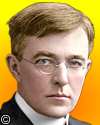
Born 31 Jan 1881; died 16 Aug 1957 at age 76. quotes
American physical chemist whose studies of molecular films on solid and liquid surfaces opened new fields in colloid research and biochemistry and won him the Nobel Prize for Chemistry in 1932. His early work on gases led to the invention of the Langmuir condensation pump. In 1913, Langmuir found that the life of the tungsten vacuum bulbs then in use could be extended considerably if they were filled with a mixture of nitrogen and argon. He also developed an atomic-hydrogen welding torch capable of temperatures up to 3,000°C, and made first use of the term plasma. While studying atomic structure he introduced the terms covalence and electrovalence. In surface chemistry, he worked the phenomenon of adsorption and the application of this to catalysis. more
American physical chemist whose studies of molecular films on solid and liquid surfaces opened new fields in colloid research and biochemistry and won him the Nobel Prize for Chemistry in 1932. His early work on gases led to the invention of the Langmuir condensation pump. In 1913, Langmuir found that the life of the tungsten vacuum bulbs then in use could be extended considerably if they were filled with a mixture of nitrogen and argon. He also developed an atomic-hydrogen welding torch capable of temperatures up to 3,000°C, and made first use of the term plasma. While studying atomic structure he introduced the terms covalence and electrovalence. In surface chemistry, he worked the phenomenon of adsorption and the application of this to catalysis. more
The Quintessence of Irving Langmuir, by Albert Rosenfeld. - book suggestion.
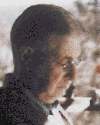
Born 31 Jan 1881; died 16 Apr 1949 at age 68.
U.S. paleontologist and geologist known for his work on paleoecology as shown by Foraminifera (marine protozoans). He was director of Boston Natural History Museum between 1913-23 and director of Cushman Laboratory for Foraminiferal Research in Sharon, Massachusetts in 1923. He was the most well-known foraminiferologist of his time
U.S. paleontologist and geologist known for his work on paleoecology as shown by Foraminifera (marine protozoans). He was director of Boston Natural History Museum between 1913-23 and director of Cushman Laboratory for Foraminiferal Research in Sharon, Massachusetts in 1923. He was the most well-known foraminiferologist of his time
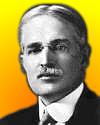
Born 31 Jan 1868; died 2 Apr 1928 at age 60.
American analytical chemist who was awarded the 1914 Nobel Prize for Chemistry "in recognition of his accurate determinations of the atomic weight of a large number of chemical elements." His work meticulously refined the classical gravimetric methods of analysis to better reduce the sources of error. His work, and that of coworkers yielded accurate values for atomic weight for over 60 elements. In 1913, he found that the atomic weight of ordinary lead differed from lead produced from the radioactive decay of uranium and thus concurred with Soddy's prediction of isotopes. Richard's values were not improved until mass spectrometry became available after WW II. He also carried out work in thermochemistry and electrochemistry.«
American analytical chemist who was awarded the 1914 Nobel Prize for Chemistry "in recognition of his accurate determinations of the atomic weight of a large number of chemical elements." His work meticulously refined the classical gravimetric methods of analysis to better reduce the sources of error. His work, and that of coworkers yielded accurate values for atomic weight for over 60 elements. In 1913, he found that the atomic weight of ordinary lead differed from lead produced from the radioactive decay of uranium and thus concurred with Soddy's prediction of isotopes. Richard's values were not improved until mass spectrometry became available after WW II. He also carried out work in thermochemistry and electrochemistry.«
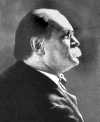
Born 31 Jan 1841; died 10 Apr 1911 at age 70.
Samuel Loyd was an American puzzlemaker who was best known for composing chess problems and games, including Parcheesi, in addition to other mathematically based games and puzzles. He studied engineering and intended to become a steam and mechanical engineer but he soon made his living from his puzzles and chess problems. Loyd's most famous puzzle was the 14-15 Puzzle which he produced in 1878. The craze swept America where employers put up notices prohibiting playing the puzzle during office hours. Loyd's 15 puzzle is the familiar 4x4 arrangement of 15 square numbered tiles in a tray that must be reordered by sliding one tile at a time into the vacant space.
Samuel Loyd was an American puzzlemaker who was best known for composing chess problems and games, including Parcheesi, in addition to other mathematically based games and puzzles. He studied engineering and intended to become a steam and mechanical engineer but he soon made his living from his puzzles and chess problems. Loyd's most famous puzzle was the 14-15 Puzzle which he produced in 1878. The craze swept America where employers put up notices prohibiting playing the puzzle during office hours. Loyd's 15 puzzle is the familiar 4x4 arrangement of 15 square numbered tiles in a tray that must be reordered by sliding one tile at a time into the vacant space.
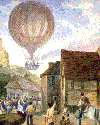
Born 31 Jan 1785; died 26 Mar 1870 at age 85.
English balloonist whose outstanding achievement was his flight with two companions in 1836 from Vauxhall Gardens, London, to Weilburg, Germany, a distance of 480 miles. With this18-hour trip, Green set a long-distance balloon record for flights launched from England that was not beaten until 1907. He was accompanied on the flight by Monck Mason and Robert Hollond.
English balloonist whose outstanding achievement was his flight with two companions in 1836 from Vauxhall Gardens, London, to Weilburg, Germany, a distance of 480 miles. With this18-hour trip, Green set a long-distance balloon record for flights launched from England that was not beaten until 1907. He was accompanied on the flight by Monck Mason and Robert Hollond.
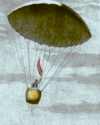
Born 31 Jan 1769; died 18 Aug 1823 at age 54.
French aeronaut who was the first person to use a parachute regularly and successfully. He perfected the parachute and made jumps from greater altitudes than had been possible before. On 22 Oct 1797, at age 28, Garnerin made his first jump above the Parc Monceau in Paris. He dropped from a hot-air balloon at 3000 feet. His parachute, with 36 ribs and lines, was semi-rigid, somewhat resembling an umbrella. The descent was a success, except that he shook back and forth violently while falling. The physicist Lalande, who attended the event, suggested improving air flow with a small opening at the top of the canopy. Garnerin died while preparing balloon equipment, when a beam struck his head inflicting a mortal wound. more
French aeronaut who was the first person to use a parachute regularly and successfully. He perfected the parachute and made jumps from greater altitudes than had been possible before. On 22 Oct 1797, at age 28, Garnerin made his first jump above the Parc Monceau in Paris. He dropped from a hot-air balloon at 3000 feet. His parachute, with 36 ribs and lines, was semi-rigid, somewhat resembling an umbrella. The descent was a success, except that he shook back and forth violently while falling. The physicist Lalande, who attended the event, suggested improving air flow with a small opening at the top of the canopy. Garnerin died while preparing balloon equipment, when a beam struck his head inflicting a mortal wound. more
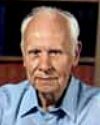
Died 31 Jan 1995 at age 90 (born 30 Apr 1904). quotes
U.S. mathematician who was regarded by many as the "father of the modern digital computer." While serving as a research mathematician at Bell Telephone Laboratories in New York City, Stibitz worked on relay switching equipment used in telephone networks. In 1937, Stibitz, a scientist at Bell Laboratories built a digital machine based on relays, flashlight bulbs, and metal strips cut from tin-cans. He called it the "Model K" because most of it was constructed on his kitchen table. It worked on the principle that if two relays were activated they caused a third relay to become active, where this third relay represented the sum of the operation. Also, in 1940, he gave a demonstration of the first remote operation of a computer.
U.S. mathematician who was regarded by many as the "father of the modern digital computer." While serving as a research mathematician at Bell Telephone Laboratories in New York City, Stibitz worked on relay switching equipment used in telephone networks. In 1937, Stibitz, a scientist at Bell Laboratories built a digital machine based on relays, flashlight bulbs, and metal strips cut from tin-cans. He called it the "Model K" because most of it was constructed on his kitchen table. It worked on the principle that if two relays were activated they caused a third relay to become active, where this third relay represented the sum of the operation. Also, in 1940, he gave a demonstration of the first remote operation of a computer.
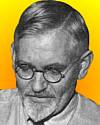
Died 31 Jan 1977 at age 89 (born 15 Jul 1887).
American zoologist, geneticist and ecologist who introduced biotic provinces to characterize areas of continuous ecological similarity in climate, soils, and topography. He investigated geographical and ecological distribution pertaining to plants and animals in fieldwork throughout the Southwest and Mexico in the 1920s and 30s. When he found C. Hart Merriam's idea of life zones to be inadequate for modeling distribution patterns, he developed his concept of biotic provinces. Dice demonstrated their application in his book, The Biotic Provinces of North America (1943). He is also known for his derivation of the Dice index, a similarity coefficient used to measure degree of association between biotic samples.«
American zoologist, geneticist and ecologist who introduced biotic provinces to characterize areas of continuous ecological similarity in climate, soils, and topography. He investigated geographical and ecological distribution pertaining to plants and animals in fieldwork throughout the Southwest and Mexico in the 1920s and 30s. When he found C. Hart Merriam's idea of life zones to be inadequate for modeling distribution patterns, he developed his concept of biotic provinces. Dice demonstrated their application in his book, The Biotic Provinces of North America (1943). He is also known for his derivation of the Dice index, a similarity coefficient used to measure degree of association between biotic samples.«
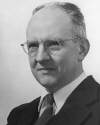
Died 31 Jan 1966 at age 63 (born 1 Sep 1902).
Dutch-American astronomer and geophysicist known for his achievements in celestial mechanics, especially for his pioneering application of high-speed digital computers for astronomical computations. While still a student he determined the mass of Titan from its influence on other Saturnian moons. Brouwer developed general methods for finding orbits and computing errors and applied these methods to comets, asteroids, and planets. He computed the orbits of the first artificial satellites and from them obtained increased knowledge of the figure of the earth. His book, Methods of Celestial Mechanics, taught a generation of celestial mechanicians. He also redetermined astronomical constants.
Dutch-American astronomer and geophysicist known for his achievements in celestial mechanics, especially for his pioneering application of high-speed digital computers for astronomical computations. While still a student he determined the mass of Titan from its influence on other Saturnian moons. Brouwer developed general methods for finding orbits and computing errors and applied these methods to comets, asteroids, and planets. He computed the orbits of the first artificial satellites and from them obtained increased knowledge of the figure of the earth. His book, Methods of Celestial Mechanics, taught a generation of celestial mechanicians. He also redetermined astronomical constants.
Died 31 Jan 1942 at age 86 (born 17 Nov 1855).
German physician and inventor who was an eyes and ears specialist, but is best known for inventing the first dry cell battery (1886). It used the same principle as the Leclanché cell. A carbon manganese rod was the anode. Instead of a liquid electrolyte, he devised a porous paste form with sal ammoniac, plaster, zinc chloride and water. All were sealed in a a zinc can that also was the cathode. Lechanché cells had been used for electric door bells, but those were vulnerable to breakage and spillage, as well as needing fresh water added periodically. To help a store-keeper, Gessner devised his dry cell as an better alternative. He obtained a German patent (8 Apr 1886), a British provisional patent (No. 18,754 on 22 Dec 1888), and a U.S. patent (No. 373,064 on 15 Nov 1887) as well as patents in Austria-Hungary, Belgium and France.«
German physician and inventor who was an eyes and ears specialist, but is best known for inventing the first dry cell battery (1886). It used the same principle as the Leclanché cell. A carbon manganese rod was the anode. Instead of a liquid electrolyte, he devised a porous paste form with sal ammoniac, plaster, zinc chloride and water. All were sealed in a a zinc can that also was the cathode. Lechanché cells had been used for electric door bells, but those were vulnerable to breakage and spillage, as well as needing fresh water added periodically. To help a store-keeper, Gessner devised his dry cell as an better alternative. He obtained a German patent (8 Apr 1886), a British provisional patent (No. 18,754 on 22 Dec 1888), and a U.S. patent (No. 373,064 on 15 Nov 1887) as well as patents in Austria-Hungary, Belgium and France.«
The Battery: How Portable Power Sparked a Technological Revolution, by Henry Schlesinger. - book suggestion.
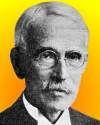
Died 31 Jan 1941 at age 85 (born 17 Jan 1856). quotes
American physician and epidemiologist who, with Gardner T. Swarts, established the first municipal bacteriological laboratory in the U.S. (1888) in Providence, Rhode Island. As Superintendent of Health of Providence for 48 years from 1884, he compiled epidemiological data of outstanding accuracy and completeness. He determined from field studies and statistics that infectious diseases were spread in the region's temperate climate by simple personal contact. In 1910, he established Providence City Hospital where infectious disease carriers could be isolated under aseptic nursing conditions. His success pioneered similar health control measures throughout the U.S. He wrote The Sources and Modes of Infection (1910).
American physician and epidemiologist who, with Gardner T. Swarts, established the first municipal bacteriological laboratory in the U.S. (1888) in Providence, Rhode Island. As Superintendent of Health of Providence for 48 years from 1884, he compiled epidemiological data of outstanding accuracy and completeness. He determined from field studies and statistics that infectious diseases were spread in the region's temperate climate by simple personal contact. In 1910, he established Providence City Hospital where infectious disease carriers could be isolated under aseptic nursing conditions. His success pioneered similar health control measures throughout the U.S. He wrote The Sources and Modes of Infection (1910).
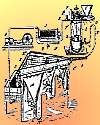
Died 31 Jan 1940 at age 79 (born 15 Jan 1861).
British metallurgist, one of the originators of the froth flotation process for concentrating ores preliminary to the extraction of metal (with H.F.K. Picard, U.S. patent No. 835120, 6 Nov 1906). In this latter method, crude ore is ground to a fine powder and mixed with water, frothing reagents, and collecting reagents. These reagents, such as oil or fatty acids, are chosen for a preferential affinity for metalliferous matter over the waste material (gangue). When air is blown through the mixture, mineral particles cling to the bubbles, which rise to form a froth on the surface, whereas gangue settles to the bottom. The froth is skimmed off, and processed. Sulman had previously worked on several methods for the extraction of gold, including treatment with cyanogen bromide.
British metallurgist, one of the originators of the froth flotation process for concentrating ores preliminary to the extraction of metal (with H.F.K. Picard, U.S. patent No. 835120, 6 Nov 1906). In this latter method, crude ore is ground to a fine powder and mixed with water, frothing reagents, and collecting reagents. These reagents, such as oil or fatty acids, are chosen for a preferential affinity for metalliferous matter over the waste material (gangue). When air is blown through the mixture, mineral particles cling to the bubbles, which rise to form a froth on the surface, whereas gangue settles to the bottom. The froth is skimmed off, and processed. Sulman had previously worked on several methods for the extraction of gold, including treatment with cyanogen bromide.
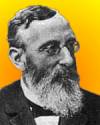
Died 31 Jan 1920 at age 74 (born 9 Mar 1845).
Wilhelm (Friedrich Philipp) Pfeffer was a German botanist whose work on osmotic pressure made him a pioneer in the study of plant physiology. With Julius von Sachs, he was a leader in systematizing the fundamentals of plant physiology. In 1877, while investigating cell metabolism, he devised a semi-permeable membrane for the study osmosis. By measuring osmotic pressure, a technique he developed, Pfeffer found that pressure depends on the size of the molecules that are too large to pass through the membrane. Thus, he had a method to measure the size of such giant molecules. However, he was unable to find a mathematical relationship to predict osmotic pressure, which was furthered by the work of Van't Hoff.
Wilhelm (Friedrich Philipp) Pfeffer was a German botanist whose work on osmotic pressure made him a pioneer in the study of plant physiology. With Julius von Sachs, he was a leader in systematizing the fundamentals of plant physiology. In 1877, while investigating cell metabolism, he devised a semi-permeable membrane for the study osmosis. By measuring osmotic pressure, a technique he developed, Pfeffer found that pressure depends on the size of the molecules that are too large to pass through the membrane. Thus, he had a method to measure the size of such giant molecules. However, he was unable to find a mathematical relationship to predict osmotic pressure, which was furthered by the work of Van't Hoff.
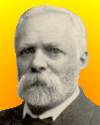
Died 31 Jan 1908 at age 76 (born 31 Oct 1831).
German physiologist who measured gross metabolism in mammals and humans. He made the first determination of the amount of fat, protein, and carbohydrate broken down by the body; proved the equality of total input of carbon, hydrogen, nitrogen, and oxygen with output of these elements in metabolic products excreted and exhaled by animals on constant diets; founded study of metabolic activity as guide to disease; disproved idea that protein is the source of muscle energy; investigated nutritional value of many substances including asparagine and peptones, which led to discovery of essential amino acids; devised first calorimeter large enough for studies of human metabolism. His collaboration with Max von Pettenkofer helped establish modern nutritional science.
German physiologist who measured gross metabolism in mammals and humans. He made the first determination of the amount of fat, protein, and carbohydrate broken down by the body; proved the equality of total input of carbon, hydrogen, nitrogen, and oxygen with output of these elements in metabolic products excreted and exhaled by animals on constant diets; founded study of metabolic activity as guide to disease; disproved idea that protein is the source of muscle energy; investigated nutritional value of many substances including asparagine and peptones, which led to discovery of essential amino acids; devised first calorimeter large enough for studies of human metabolism. His collaboration with Max von Pettenkofer helped establish modern nutritional science.
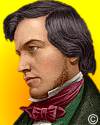
Died 31 Jan 1849 at age 33 (born 14 May 1815). quotes
English chemist who prepared furfurine and benzoline (1845), the first examples of vegeto-alkali or organic salt-bases, as they were known then. He coined their names. Fownes was the first winner of the one hundred guineas (£105) Actonian Prize from the Royal Institution for his essay, Chemistry as Exemplifies the Wisdom and Beneficence of God. He published this essay, which dealt with animal and plant chemistry, in 1844. In the same year he also published a successful general text-book of chemistry, A Manual of Elementary Chemistry, Theoretical and Practical, which survived decades after him through twelve editions, the last in 1872. He died at the young age of 34.« more
English chemist who prepared furfurine and benzoline (1845), the first examples of vegeto-alkali or organic salt-bases, as they were known then. He coined their names. Fownes was the first winner of the one hundred guineas (£105) Actonian Prize from the Royal Institution for his essay, Chemistry as Exemplifies the Wisdom and Beneficence of God. He published this essay, which dealt with animal and plant chemistry, in 1844. In the same year he also published a successful general text-book of chemistry, A Manual of Elementary Chemistry, Theoretical and Practical, which survived decades after him through twelve editions, the last in 1872. He died at the young age of 34.« more
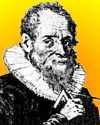
Died 31 Jan 1632 at age 79 (born 28 Feb 1552).
Swiss watchmaker and mathematician who invented logarithms independently of the Scottish mathematician John Napier. He was the most skilful, and the most famous, clockmaker of his day. He also made astronomical and practical geometry instruments (notably the proportional compass and a triangulation instrument useful in surveying). This led to becoming an assistant to the German astronomer Johannes Kepler. Bürgi was a major contributor to the development of decimal fractions and exponential notation, but his most notable contribution was published in 1620 as a table of antilogarithms. Napier published his table of logarithms in 1614, but Bürgi had already compiled his table of logarithms at least 10 years before that, and perhaps as early as 1588.
Swiss watchmaker and mathematician who invented logarithms independently of the Scottish mathematician John Napier. He was the most skilful, and the most famous, clockmaker of his day. He also made astronomical and practical geometry instruments (notably the proportional compass and a triangulation instrument useful in surveying). This led to becoming an assistant to the German astronomer Johannes Kepler. Bürgi was a major contributor to the development of decimal fractions and exponential notation, but his most notable contribution was published in 1620 as a table of antilogarithms. Napier published his table of logarithms in 1614, but Bürgi had already compiled his table of logarithms at least 10 years before that, and perhaps as early as 1588.
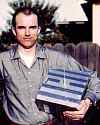
In 1962, OSCAR 1, the first Orbiting Satellite Carrying Amateur Radio burnt up in the Earth's atmosphere. Its orbit had decayed since its last transmission on 1 Jan 1962, having spent 312 orbits in 22 days signalling HI in Morse code for radio amateurs around the world to receive from space until its non-rechargeable battery failed. It was achieved by San Francisco Bay radio hams, most having experience working at electronics companies, who arranged for their 10-lb hand-built transmitter to be placed in orbit just above the Earth's atmosphere, carried piggyback on a rocket launched to deploy a military satellite on 12 Dec 1961. That day marked the 60th anniversary of Marconi's first transatlantic radio transmission. It was also little more than four years since Russia launched the Sputnik satellite on 31 Jan 1957.«[Image: OSCAR 1 satellite held by Frank Ginner, one of its builders.]
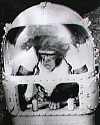
In 1961, the U.S. launched a 4-year-old male chimpanzee named Ham on a Mercury-Redstone 2 rocket into suborbital flight to test the capabilities of the Mercury capsule. During his 16.5 minute suborbital flight, Ham experienced about 7 minutes of weightlessness, reached an altitude of 108 miles and a speed of 13,000 mph. He was wired to medical sensors to monitor his vital signs. During flight, Ham performed some simple tasks such as pulling levers when a light came on for a reward of banana pellets. Ham was recovered safely 1,425 miles downrange. This was a test flight before risking the lives of human beings. Now, after Ham's successful flight, NASA was ready to launch the first Mercury astronaut, Alan Shepard, into sub-orbital flight three months later.
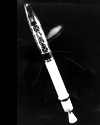
In 1958, the United States entered the space age by launching the first successful orbiting satellite, Explorer-I, four months after the Soviet launch of Sputnik on 4 Oct 1957. Explorer-I measured cosmic radiation, and led to the discovery of the Van Allen radiation belt. Its instrumentation included temperature sensors, a micrometeorite impact microphone, and a ring of micrometeorite erosion guages. Data from these instruments were returned by a 60-mW transmitter operating on 108.03 MHz and a 10-milliwatt transmitter operating on 108.00 MHz. Explorer-I was 80-inch long, 6-in diam, weighed 31-lb with 18-lb of payload and was delivered into orbit using a Jupiter-C rocket. The orbit had a period of 114.9 minutes.
In 1950, President Harry S. Truman announced a program to develop the American hydrogen bomb. "I have directed ... work on all forms of atomic weapons, including the so called hydrogen or superbomb. Like all other work in the field of atomic weapons, it is being and will be carried forward on a basis consistent with the overall objectives of our program for peace and security ... until a satisfactory plan for international control of atomic energy is achieved. We shall also continue to examine all those factors that affect our program for peace and this country, security." This response followed his earlier announcement, on 23 Sep 1949, that had shocked America, "We have evidence that within recent weeks an atomic explosion occurred in the USSR."
Dark Sun: The Making of the Hydrogen Bomb, by Richard Rhodes. - book suggestion.
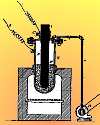
490953
In 1893, Thomas A. Edison was issued U.S. two patents. One was for the "Art of Generating Electricity" (No. 490,953) which described a cell made with positive and negative electrodes in a heated chamber containing dry chemicals which is exhausted to the point that gases generated in the reaction become good conductors of electricity. The other patent concerned the "Manufacture of Carbon Filaments for Electric Lamps" (No. 490,954). This described taking slips of fibrous vegetable material, such as bamboo, to be heated in a suitable furnace until partially carbonized, then soaked for several hours in sugar syrup to fill the pores with more carboniferous material before reheating until completely carbonized.
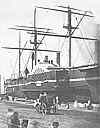
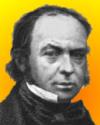
Brunel: The Life and Times of Isambard Kingdom Brunel, by Angus Buchanan. - book suggestion.
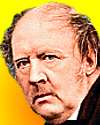
Talbot
In 1839, Henry Fox Talbot read a paper before the Royal Society, London, to describe his photographic process using solar light, with an exposure time of about 20 minutes: Some Account of the Art of Photogenic Drawing or the Process by which Natural Objects may be made to Delineate Themselves without the Aid of the Artist's Pencil. He had heard that Daguerre of Paris was working on a similar process. To establish his own priority, Fox Talbot had exhibited “such specimens of my process as I had with me in town,” the previous week at a meeting of the Royal Institution, before he had this more detailed paper ready to present.«
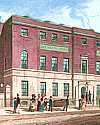
In 1747, the London Lock Hospital opened, the first to be established to treat venereal diseases, founded by the surgeon William Bromfield when he was in his mid-30s. Syphilis was a major health concern throughout Europe, which at that time was a deadly disease. It was funded entirely by donations, with no aid from the state. It later expanded to include a maternity unit, a chapel, and a Rescue Home. The name dates back to the earlier leprosy hospitals of medieval times, which became known as lock hospitals, perhaps after the “locks”, or rags, which covered the lepers’ lesions. In 1948, the London Lock Hospital became part of the National Health Service, and was used for three years as an outpatients department for Paddington Hospital, before it was closed.«




